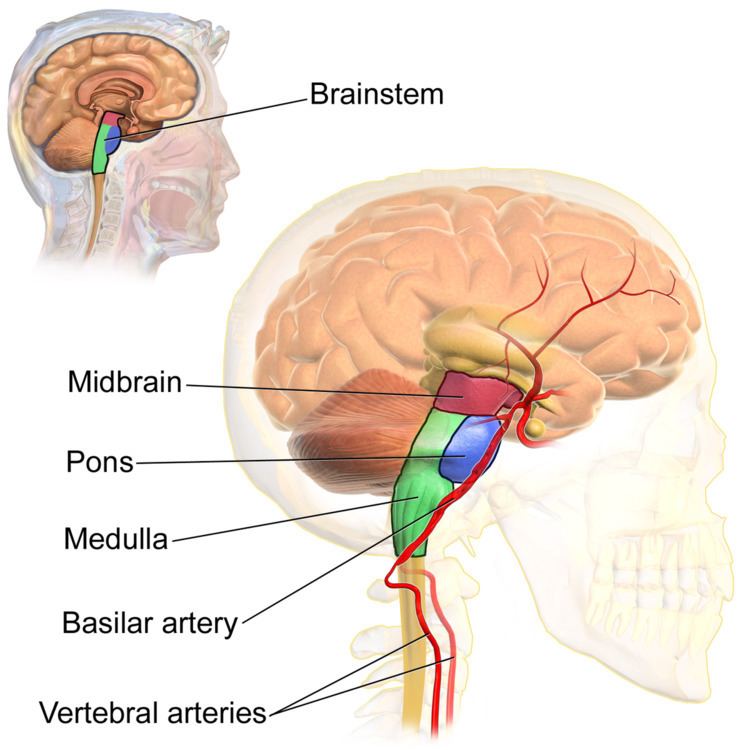Source subclavian arteries Latin arteria vertebralis | Vein vertebral vein MeSH A07.231.114.839 | |
 | ||
Branches Meningeal branchesPosterior spinalAnterior spinalPICABasilar artery Supplies | ||
The vertebral arteries are major arteries of the neck. They arise as branches from the subclavian arteries and merge to form the single midline basilar artery. As the vertebrobasilar system, they supply blood to the upper spinal cord, brainstem, cerebellum, and posterior part of brain.
Contents
Structure
The vertebral arteries arise from the subclavian arteries, one on each side of the body, then enter deep to the transverse process at the level of the 6th cervical vertebrae (C6), or occasionally (in 7.5% of cases) at the level of C7. They then proceed superiorly, in the transverse foramen of each cervical vertebra. Once they have passed through the transverse foramen of C1 (also known as the atlas), the vertebral arteries travel across the posterior arch of C1 and through the suboccipital triangle before entering the foramen magnum.
Nunziante Ippolito, a Neapolitan physician, identified the "angle of Nunziante Ippolito" to find the vertebral artery, between the anterior scalene muscle and the longus colli muscle.
Inside the skull, the two vertebral arteries join to form the basilar artery at the base of the Pons. The basilar artery is the main blood supply to the brainstem and connects to the Circle of Willis to potentially supply the rest of the brain if there is compromise to one of the carotids. At each cervical level, the vertebral artery sends branches to the surrounding musculature via the anterior spinal arteries.
The vertebral artery may be divided into four parts:
Variation
The left vertebral artery is usually larger and carries more blood. In 3-15% of the population, a bony bridge called the arcuate foramen covers the groove for the vertebral artery on vertebra C1.
Function
Upper spinal cord, brainstem, cerebellum, posterior part of brain.
